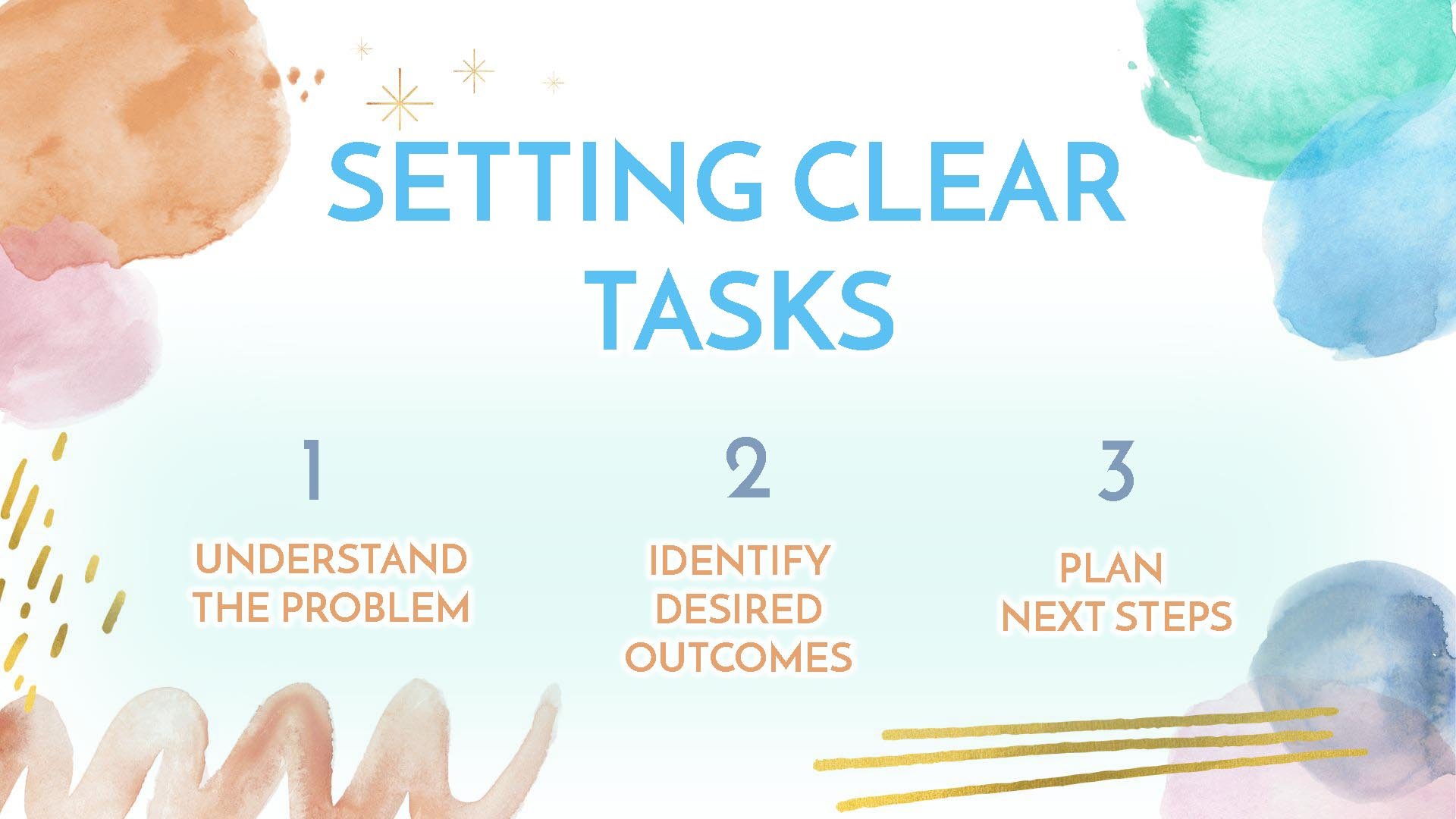How to Set Clear Tasks For Self Employed Artist
Creative jobs are becoming more important as manual jobs are automated. The same is true for many of our art practices. Creative jobs require a different approach to work, with a focus on ongoing learning, flexibility, and effective time management.
This last one can be challenging but here are some ideas on best task management methods for successful careers in our new knowledge-based economy.
KEY TAKEAWAYS:
The best way to organize and prioritize your task is to:
First: Understand the problem
Second: Identify the desired outcome and set expectations
Third: Plan your next step for success.
By using these simple steps for every project, you can effectively solve your problems and organize the steps you need to take to achieve your goals.
Why is organizing tasks harder in 2023?
THE CHANGING JOB MARKET
The job market is changing, which changes how creative business owners organize themselves.
We’ve shifted from traditional manual labor to knowledge work. With manual jobs like plumbing or farming, we physically see when the work is done - a fixed pipe or a harvested crop. Same is true for traditional craft-based artists.
At some point in an artist’s career when they create a weaving or a painting in their signature style, they will have pretty clear beginning and end point. This is a distinction between the creative R&D part (knowledge work) of being an artist and the product creation (manual labor) part.
When we speak of an artist’s career, it gets more complicated. We not only have to create artwork but are tasked with the knowledge work of career management including branding, networking, sales, etc. This work is ongoing and never really "done."
This means you need to be better at managing time, resources, and adaptable to changing circumstances.
The number of artists and creative workers in the U.S. has grown in recent years. Over 2 million people worked in creative occupations as of 2017. This includes artists, writers, designers, and other creative professionals. (The National Endowment for the Arts 2019)
ENDLESS JOBS
The “job” of a creative business is often undefined. Unlike traditional jobs where you are told the specific tasks to complete, artists are constantly inundated with new tasks that require brand-new skills.
In today’s changing economy 50% of all employees will need reskilling by 2025 (World Economic Forum)
While managing a creative business you'll find an aritsts job description is fluid and that you need to be able to pivot and adapt to new challenges as they arise.
Being an artist is about more than just making the artwork.
In addition to artistic abilities, creatives must be good at marketing, branding, networking, and financial management. It’s daunting to navigate the complex business side of the artworld, but this is essential for building a successful art career.
STAT: about 30% of artists are self-employed, while the majority find their income in non-arts-related industries (NEA, 2019). Is this good or bad? I don’t know!
HOW DO WE ORGANIZE OUR DAY TO DAY?
So, with amorphous jobs and constantly changing knowledge-based businesses, how do artists manage constantly changing tasks requiring different skill sets?
In edgeless creative careers, effective task management is critical to success. Without clearly defined tasks and deadlines, you will become overwhelmed and lose focus.
STAT: The ability to effectively manage time and prioritize tasks is one of the most in-demand skills (National Association of Colleges and Employers, 2018).
So, let’s review those three keys to task management:
1) Understand the problem at hand. This means taking the time to carefully assess what is the issue you’re trying to solve.
2) Assess outcomes. Having a clearer definition of the desired outcome can help you to focus your efforts and prioritize your tasks. This means setting specific goals and deadlines for each task. Set up clear expectations of what you would like to achieve. Then regularly check in to ensure that you are making progress toward your desired outcome.
3) Next steps. This is where you’re To-Do list comes in. Having a clear understanding of the next step helps you to stay on track and avoid getting bogged down by indecision or uncertainty. This means breaking down larger tasks into smaller, more manageable steps, and setting specific deadlines for each step.
EXERCISE
Think about your next project. An upcoming exhibition, a new commission, applying to new shows, what's for dinner?
First Discover The Problem: What is your issue and what are you trying to solve / make better.
Second Identify Your Desired Outcomes: Set proper expectations.
Third Plan Your Next Step: I like to divide a new project into 3 parts (depending on how big of a project it is) then divide each part into a series of smaller tasks that you could achieve in under an hour.
YOUR STRIKE ZONE:
Whatever you are trying to achieve, make sure you are within your strike zone. I’m not a big fan of sports analogies, but sometimes they work! Baseball star Ted Williams says that:
“A good hitter can hit a pitch that is over the plate three times better than a great hitter with a questionable ball in a tough spot.”
Knowing your skills, knowing what’s on your current plate, and assessing new tasks appropriately will increase your chances of success with new tasks.
CONCLUSION
As an artist, you need to be proficient in more than just creating art.
Developing skills in marketing, branding, networking, and financial management is essential for success. Effective task management is critical for success in creative careers, so prioritize tasks and manage your time effectively, delivering high-quality work and get things done.
Remember, the key to success is to understand the problem, align expectations of your goal, and breakdown the smaller steps to accomplish your task.
With this simple process, you can develop the skills needed to navigate the ever-changing job market.





